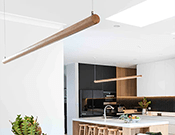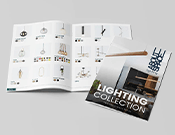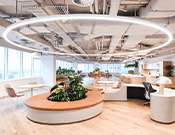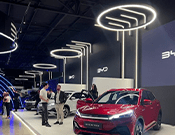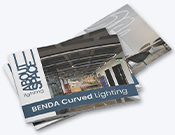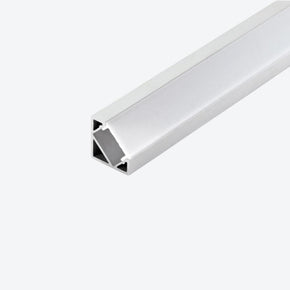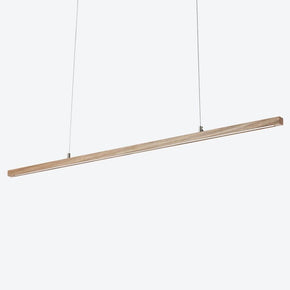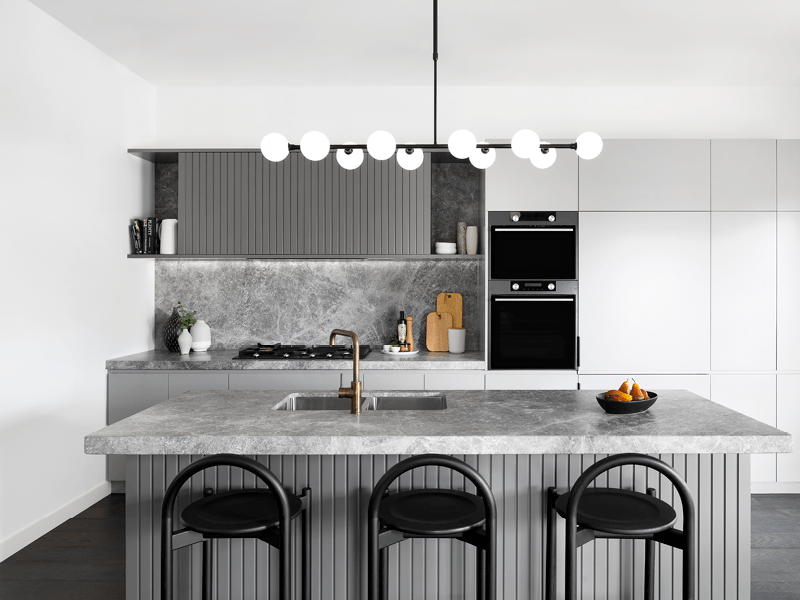- No products in the cart.
- ``
What does a lighting designer do?
08
Dec
Lighting design is as much an art as it is a science, which means getting it right can be quite complex. But you can trust you’re in good hands when working with a lighting designer. Lighting designers are experts in illumination. They design functional and beautiful lighting plans to enhance the architecture and interior design of a building, whether that’s a home or a commercial space.
Lighting designers have a keen eye for design, as well as being across any building and design codes. They also tend to be technically minded with an excellent understanding of the science and technology at the foundation of good lighting.
Thinking of hiring a lighting designer for your next project? These are the steps they’ll take you through.
The lighting design brief
It all starts with the brief. If possible, you should engage a lighting designer as early in the design or building process as possible. If you start talking to lighting designers too late in the process, you risk limiting your lighting options.
If you’re still in the planning phase of a new build, a lighting designer can work with your architect and your interior designer to plan a lighting scheme that works harmoniously with every element of the space. If you get a lighting designer on board early on in the process, you’ll also be able to lean heavily on your other contractors for the brief. Architects and interior designers can relay the overall vision for the space and can provide as much detail about the desired look and feel as possible.
Your lighting designer will also need information about the function of the space, or who will use it. A home for a young family will require different lighting than an aged care retirement home.
At this stage, the more information, the better! Try to provide your lighting designer with as much information as possible - floor plans, furniture layouts and any particular task areas or special needs of the users. Your lighting designer will always ask if they need more information - this could be drawings, renders, lighting specifications or IES files. IES (Illuminating Engineering Society) files are plain text files that contain information on how specific structures are affected by light - they help lighting designers understand how to best light certain objects.
From here, your lighting designer will study your brief and all the documents you’ve provided. This will form the bible of your lighting design scheme.
Brainstorming different designs
After you brief your lighting designer, they’ll go away and brainstorm ideas, either on their own, or often with another lighting designer or a team of lighting designers. They'll explore several different concepts for the lighting design, weighing up how the space will be used, any regulations or building codes they need to adhere to, and the overall aesthetic of the space.
Lighting design software

Your lighting design will use lighting software to plan your lighting scheme. They can run IES files for different lighting options through the software to see the size, shape, texture, lumen output (how bright the light is), CRI rating (how the light affects the colour of objects) wattage (the amount of power the light uses) and beam angles (the amount of light that spreads from the light) of different fixtures.
The software also enables your lighting designer to model the space as accurately as possible with the information you’ve provided. The model will even take into account the reflectiveness of your surfaces, including walls, floors, ceilings, doors, windows, furniture, and other lighting accessories.
Reflective surfaces will affect the quality and quantity of light in the space, so lighting designers will consider this in their planning so as not to create a too-bright or too-dull space (this also affects the energy consumption of the space).

Lighting design standards
When designing a lighting scheme, your lighting designer will be across all local lighting standards and guidelines. Lighting standards are set by local councils to provide technical guidance to lighting designers, enabling them to create lighting schemes that are safe and suitable for the space. These standards provide guidance on aspects such as glare, colour temperature, colour rendering and installation.
Your lighting designer will also consider illumination power densities. Lighting power density is a screening measure that indicates whether a space has any power-saving opportunities. Using these standards as a guideline, the designer can gauge whether they are under-lighting or over-lighting the space. The more the plan meets the guidelines, the better functionality and efficiency the design will have.

Aesthetics of lighting design
Although standards must be met, the aesthetics of the lighting design is also crucial to a space. A good balance between both is the ideal scenario.
The aesthetics of a lighting design plan takes into account how and where the lighting is positioned to enhance design qualities of the space. It also factors in the intensity of the light, the angle of the beam, how the light renders colours, how different lighting sources are layered and a range of other technical aspects that impact how the users experience a space.
Aesthetics are also, of course, concerned with the design of the fixture itself. The shape, size, and materials used should all enhance and complement the design of the space. Lighting is no longer just for illumination. These days, beautiful light fixtures are just as important to interior design as the rest of the furniture.

The finishing touches
Once the fixtures have been chosen, the lighting designer will check which fixtures need additional elements, such as diffusers, dimmers and louvres. These fixtures control how the light is distributed from the lighting source.
Diffusers are semi transparent screens used to shield a light source. They soften the light output and help to distribute the light more evenly. Dimmers enable users to adjust the brightness of the light. While a louvre is a baffle that uses an open grid pattern and reflectors to direct light downward and reduce glare. They’ll also determine which kind of drivers you need - drivers regulate how much power the light source gets.
Presenting the different concepts
A good lighting plan will enhance the interior design and the architecture of the space, while also being functional and adhering to any building code and standards. It also needs to be pleasing to the eye.
Weighing up all of these factors, your lighting designer will decide on the best few plans and present the different options to you. Often, your lighting designer will present renders of the different concepts. These renders will include different views and angles of the lighting design proposal to allow you to view a conceptual visualisation of how the lighting would light up your space!

So, there you have it. If you need a lighting designer on your next project, get in touch with the team at About Space. No matter the project, our lighting designers can help you create a well-balanced lighting plan for your commercial, home renovation or interior styling project.


